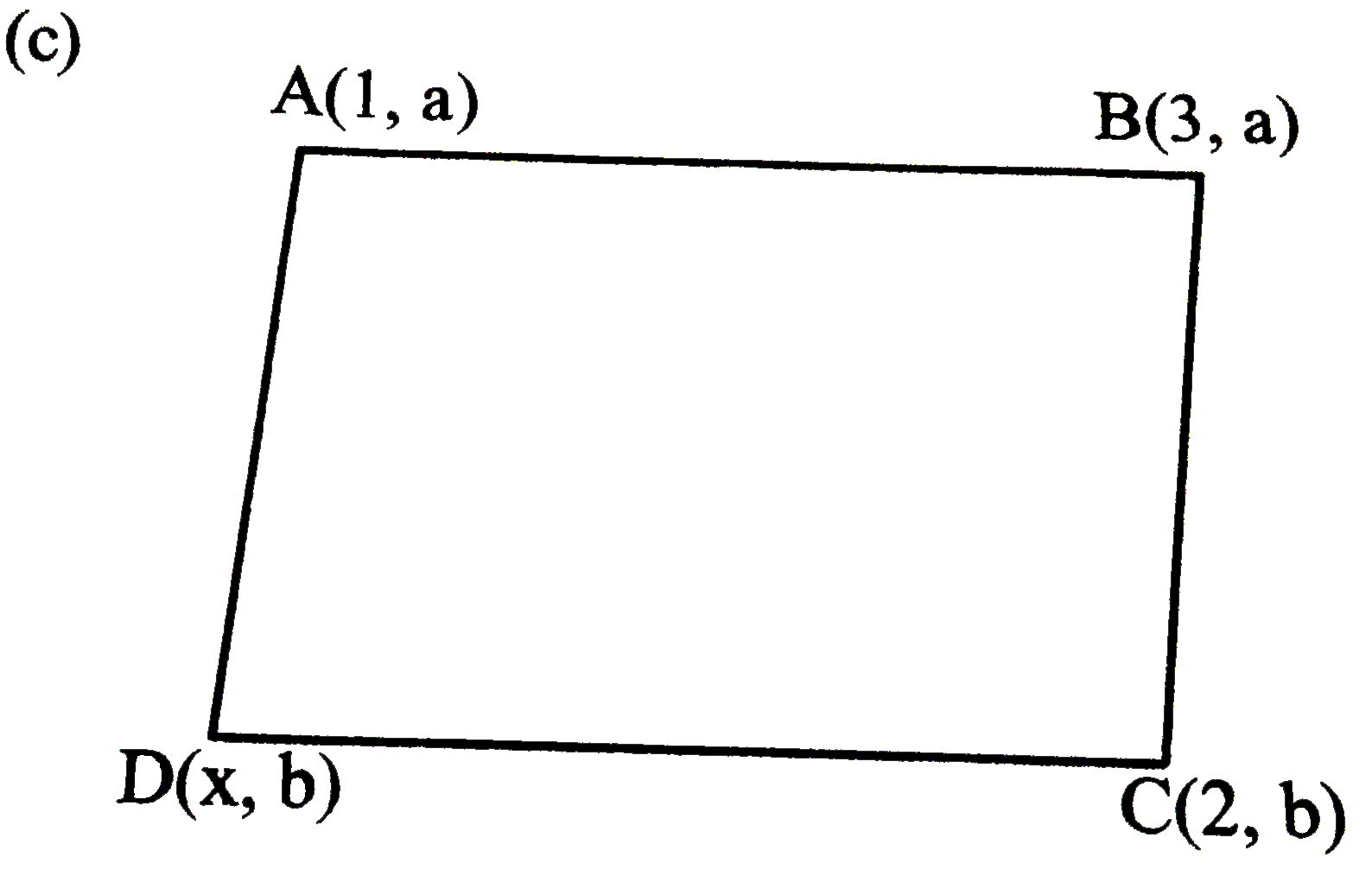If the three vertices of the parallelogram ABCD are then D is equal to
A
(3, b)
B
(6, b)
C
(0, b)
D
(5, b)
Video Solution
Text Solution
The correct Answer is:C

ABCD is a parallelogram.
, then slope of line slope of line
Also,
Then points D are (0, b)
|
Topper's Solved these Questions
Similar Questions
Knowledge Check
The vertices of a parallelogram in order are A(1, 2), B(4, y), C(x, 6), D(3, 5), then (x, y) =
A(3 , b)B(0 , b)C(4 , b)D(5 , b)If the three vertices of a parallelogram ABCD are
A(3, -1, 5), B(1, -2, -4) and C(0, 3, 0), then the
coordinates of fourth vertex isA(2, 4, 9)B(2, -4, -9)C(0, 4, 9)D(0, -4, -9)The co-ordinates of three vertices of a parallelogram ABCD are A(1,0) , B(3,4) and C(1,2). The co-ordinates of fourth vertex D are :
A(−1,2)B(−5,−4)C(1,2)D(2,0)
Three vertices of a parallelogram ABCD are A(3, 1, 2), B(0, 1, 5) and C(-1, 2, -3) Find the
coordinates of the fourth vertex.
View SolutionThree vertices of a parallelogram ABCD are A(3,−1,2), B(1,2,−4)and C(−1,1,2). Find the coordinates of the fourth vertex.
View SolutionThree vertices of a parallelogram ABCD are A(3,−1,2),B(1,2,−4) and C(−1,1,2). Find the Coordinate of the fourth vertex.
View SolutionThe vertices of a parallelogram in order are A(1,2), B(4, y), C(x, 6) and D(3,5). Then (x, y) is
View SolutionThe vertices of a parallelogram in order are A(1, 2), B(4, y), C(x, 6), D(3, 5), then (x, y) =
View Solution
